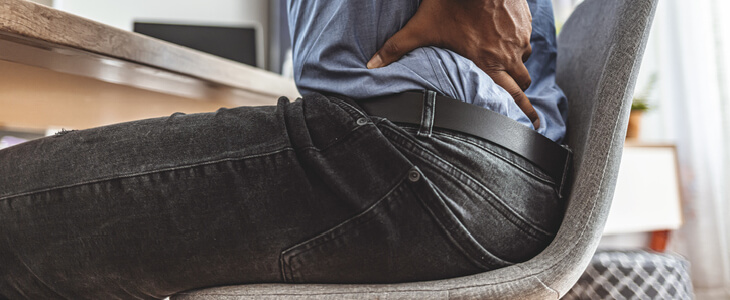Most people think of posture in terms of good or bad, as if it is a moral imperative, but posture is much more complicated and impactful than that. Incorrect posture, whatever shape it takes, can result in joint, bone or muscle pain, digestive or respiratory problems, sleep disorders, and even depression. That’s why it is important to understand the various types — in order to avoid them.
At Long Island Spine Rehabilitation Medicine, our physiatrists focus on relieving pain and restoring function. Many of our patients have spinal and other musculoskeletal conditions in which poor posture is a contributory factor. For this reason, in addition to offering a range of therapeutic options, we make sure to educate them on the various types and show them exercises and other ways of moving to improve their health.
The Basics of Posture
Before we get into the 5 particular types, let’s take a look at two basic distinctions:
- Dynamic refers to the way you hold yourself during movement, for example when you are walking, running, bending, reaching, or dancing.
- Static, on the other hand, refers to the way you hold yourself when you are still: during sleep, while sitting, lying down, or standing.
To improve your health, both dynamic and static postures must be addressed.
5 Types
Since years of poor posture can lead to pain, poor health, and even, in extreme cases, abnormal positioning of the spine, the earlier you get started correcting postural defects, the better. Following are the five types:
1. Healthy Posture
Let’s start on a positive note. Good posture keeps your body and your spine in alignment.
Standing, your ears should be in line with your shoulders, spine, hips, pelvis, and ankles. Sitting, your feet should be flat on the ground, and your core muscles should be used to keep your shoulders upright and your weight evenly distributed on both hips. Note: sitting with your legs crossed can result in misalignment of your hips and spine.
#2. Kyphosis
Individuals with kyphosis postures have rounded shoulders with increased curves at the mid back and cervical spine (neck). This gives them a hunched appearance (hunchback) and compresses their chest. Kyphosis posture may be caused by degenerative changes, muscle weakness, or compression fractures, all commonly associated with aging. Younger patients at risk for kyphosis posture are office workers, obese or extremely tall people, and people with large breasts.
#3. Lordosis
Individuals with lordosis posture have an exaggerated lower back curve (often called a swayback), an increased neck curve, and often an increased pelvic tilt as well. Their stomach and head push forward and their buttocks may protrude. Common among pregnant women and truck drivers, lordosis posture puts strain on the low back and can destabilize balance. The problem can be caused or worsened by wearing high heels, sleeping on one’s stomach, pregnancy, obesity, or osteoporosis.
#4. Flat Back
Flat back is frequently caused by a muscle imbalance that results in the spine being flatter than normal, without its natural curves. Because the pelvis is tucked in, people with flat back tend to stoop forward. They find standing for long periods difficult and often experience back and leg pain. Degenerating discs and compression fractures are often contributory causes of flat back.
#5. Forward Head
As evident in its name, forward head involves a posture in which the head is positioned so that the ears are in front of the body’s midline instead of lining up with the shoulders. This posture frequently causes neck pain, stiffness, and sometimes an unbalanced gait. Contributing factors include excessive time spent at the computer or driving, carrying a heavy backpack, and sleeping with your head too elevated.
Being Proactive About Your Posture
As you may have noticed, only a small percentage of the population has healthy posture. Whether you are presently experiencing pain or not, if you recognize your own posture as being unhealthy according to the above information, it is wise to begin working to improve your posture now — before it causes problems.
By the same token, if you are suffering from pain, stiffness, or impaired mobility, whether you believe you have poor posture or not, this is the right time to consult with one of our specialists to start getting prompt relief and avoiding future trouble.
Contact Our Experienced Physiatrists Today
At Long Island Spine Rehabilitation Medicine, we have a number of methods, including both traditional and complementary medical treatments, to help you improve your posture, strengthen your muscles, and relieve your aches and pains. Contact us now so you can begin standing straighter, relaxing more comfortably, and sleeping like a baby.
